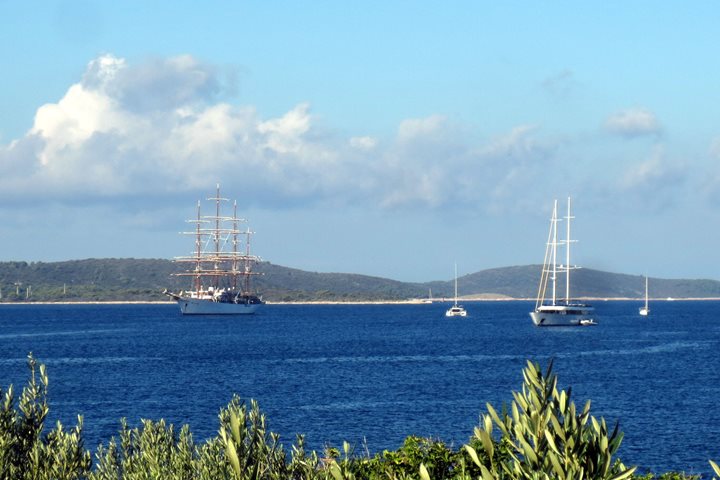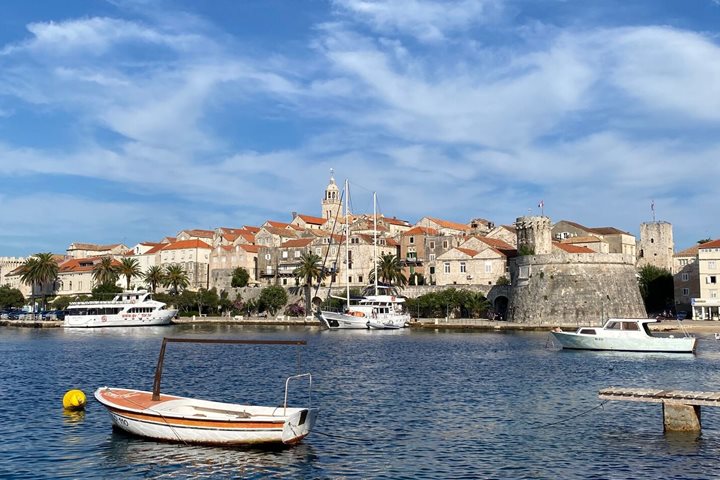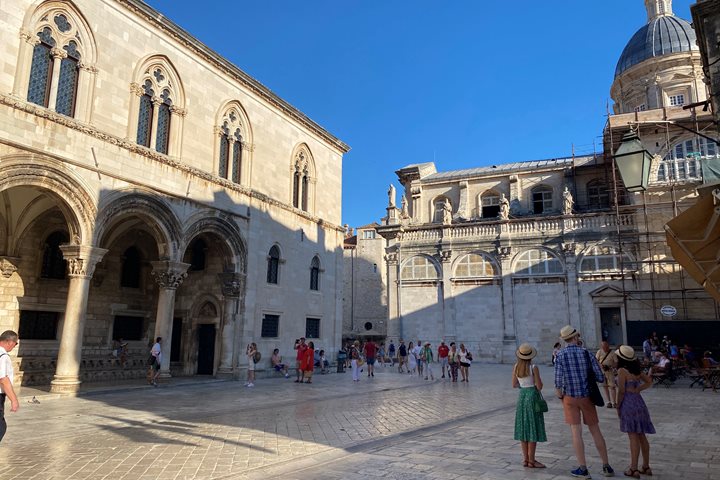We dropped anchor in the harbor of Albania’s largest and most prosperous port of Durrës. This seemingly modern city contradicts its antiquity as ships have been docking here since the 7th century BC when it was known as Epidamnos. We boarded two comfortable and air conditioned buses – it was already in the mid-80’s and drove through the Albanian countryside to the village of Kruja. Our guide Iliya told us the word means,“spring” and it was this spring, which provided an endless supply of water to the fortified town and allowed them to resist attack. Our first stop in this mostly medieval city was the famous historical museum dedicated entirely to the person of Albania’s national hero Skanderbeg who broke from the Ottoman overlords and kept Albania free from the Turks for almost 40 years. We saw a great fresco of Skanderbeg defeating a Turkish force painted across an entire wall.The view from the 2nd floor balcony was fabulous and we could almost see the Adriatic Sea. I think we all found our next stop at the 18th century home of a rich merchant fascinating. It had an olive oil press on the bottom floors and the domestic quarters on the upper levels. I was not expecting to see a separate area for the women but it was from my perspective the most beautiful of the rooms!
After leaving the older Albanian home we walked out of the fortified castle to the medieval bazar. The small shops lined the streets with the merchants standing outside inviting us in to shop. Many of us did just that and I saw many new bags on my bus. The bargains were really very good.
We boarded buses for the ride to Tirane, Albania’s capital. The evidence of the dictator Hoxha’s housing policy of no apartments built more than 6 stories was everywhere and even in the middle of the town we saw the bunkers he ordered built through the country. We had a very nice lunch in an organic restaurant. The food was delicious and completely free from pesticides. Some of us next boarded our bus and visited a beautifully decorated 18th century mosque. A wedding was taking place while we were there and it was interesting to see that Albanian Muslim women do not cover their heads in the mosque.
Once back on the Sea Cloud a prominent Albanian folk-dancing group and musicians entertained us with traditional dances and music. It did not take very long before the guests got up and decided to join in!
This evening Tom O’Brien gave a very interesting talk on the history of the Sea Cloud. I had no idea the Sea Cloud had such an interesting past, built by Hutton for his bride Post, served in World War II, was a tool for American diplomacy, owned by the Dominican playboy Trujillo and now restored to its former glory. After Tom’s talk we were treated to a view of the original staterooms. Imagine this great ship was built originally for a family of three!









